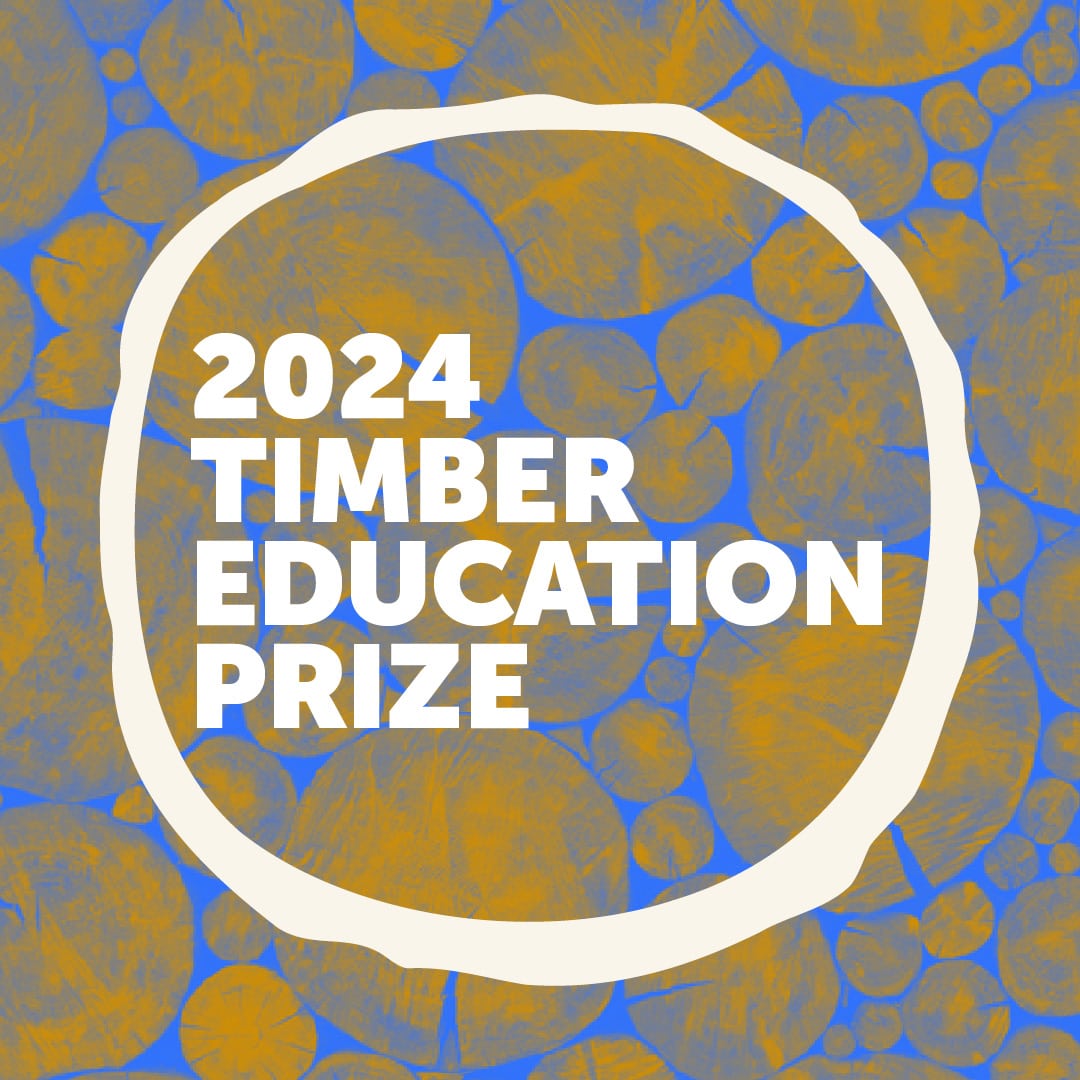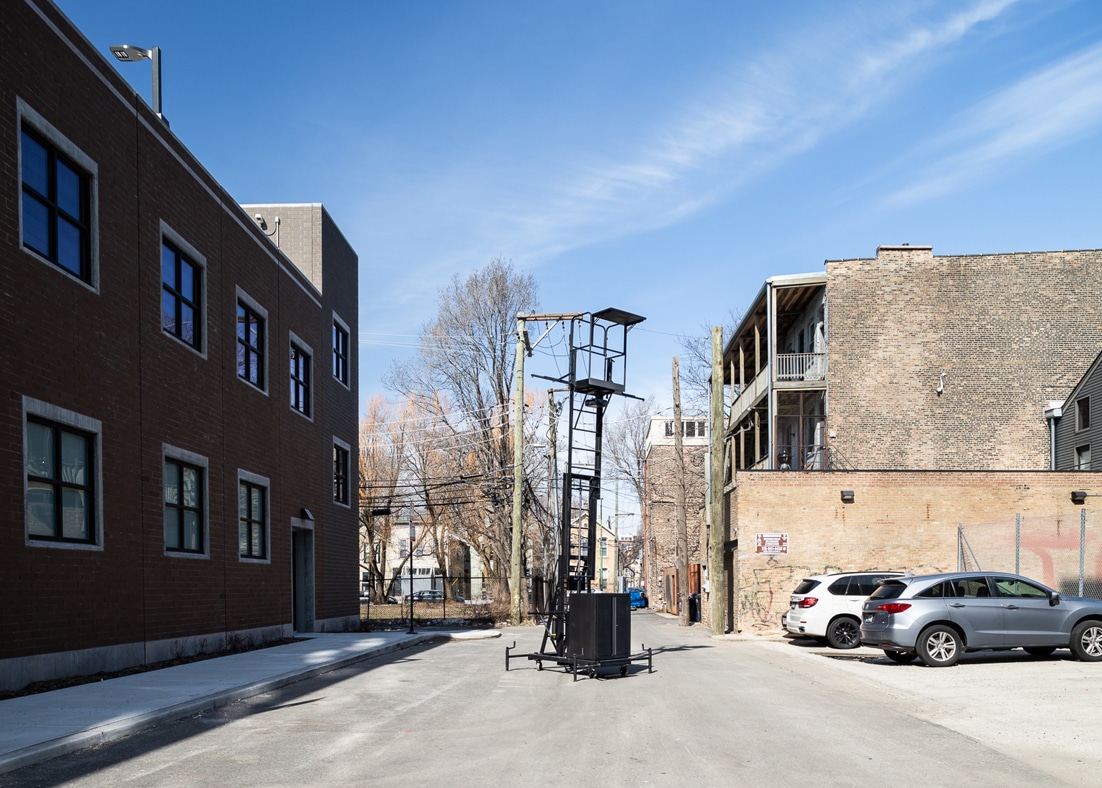Penn State
Stuckeman Architecture Professor Contributes to Mobile Public Art Installation
UNIVERSITY PARK, Pa. — Felecia Davis, Penn State associate professor of architecture in the College of Arts and Architecture’s Stuckeman School, is contributing to a mobile art installation that helps memorialize the liberators of Black America as part of her involvement as a co-founding member of the Black Reconstruction Collective (BRC).
Titled “Unmonument,” the installation consists of a matte-black, steel industrial lift and made its New York debut on Aug. 8 at the Weeksville Heritage Center in Brooklyn. It will make its way to Syracuse, New York in October and to Bellefonte, Pennsylvania, in December before moving on to Los Angeles and Atlanta in 2025.
Along with Davis, fellow BRC cofounders Olalekan Jeyifous, Amanda Williams, Mitch McEwen, Sekou Cooke, J. Yolande Daniels and Emanuel Admassu are participants in the traveling installation that seeks not only to memorialize trailblazers in Black history — such as Harriet Tubman, Nat Turner and Toussaint Louverture — but also to challenge preconceived ideas about what monuments should look like.
The BRC focused on using the basic industrial lift for its “inherently and intentionally unspectacular structure” and because it’s “flexible, unprecious and moveable.” The group called it an infrastructure for “recognizing the community that surrounds it, a beacon to celebrate, to gather and to come together.”
The multi-site approach taken by the BRC takes inspiration from the Surrealist “exquisite corpse” game that was popular in the 1920s in which each participant would take a turn writing or drawing on a sheet of paper, folding it to conceal his or her contribution and then passing it to the next player for a further contribution. As such, “Unmonument” will be modified at each installation site it touches by engaging visitors in a “call and response” exercise.
“By adapting a refurbished maintenance lift as a mobile site of intervention and then sequentially passing it from one Black artist to another — location to location — the industrial object is transformed into a powerful yet accessible symbol of resilience and ingenuity,” said Jeyifous, who organized the installation in Brooklyn.
As the organizer of the January installation in Bellefonte, Davis is teaching an architecture elective course, ARCH 497, this fall in which the students will make a digital quilt — similar to the one Davis created to reflect the stories of Black residents of the Hill District in Pittsburgh as part of her involvement in the Museum of Modern Art’s “Reconstructions: Architecture and Blackness in America” exhibit in 2021 — to tell the stories of Black influencers in the historical town in Centre County that will be displayed on the “Unmonument” installation.
Davis, director of the Computational Textiles Lab (SOFTLAB) in the Stuckeman Center for Design Computing, said the team is also able to project from the sculpture itself, so live shows or videos focusing on Black history in the area can be shown at specific times during the display time, should the students decide to do so.
“In general, it seems Bellefonte was a stop on the Underground Railroad and was a place where Black people could settle because the land was sold to them, so Bellefonte has an activist history,” said Davis. “Those known stories will most likely be included in the quilt panels, but it will be up to the students to select the stories they want to tell on their panels.”
Davis has partnered with Racine Amos, community engagement archivist and librarian at Penn State University Libraries; Julia Spicher Kasdorf, director of creative writing and professor of English in the College of the Liberal Arts; and Philip Ruth, senior historian and director of research at Cultural Heritage Research Services Inc., who are working on the Black History in Centre County project, to identify some of the stories that will be featured in the installation.
The project is scheduled to be installed, in a location yet to be determined, Dec. 13-15 during the Bellefonte Victorian Christmas celebration.
“The purpose of the installation is to understand what life was like as a Black or African American person in Bellefonte historically and, through that understanding, learn how the future could be shaped,” said Davis. “Even though the project seed is historical, the thinking is ‘What from this history can be used to build a future? What needs to happen?’ Designers are always working on things that are not yet present, so the project, in this sense, is historical and imaginary.”
Texas Tech University
NCBDS Archives Now at Texas Tech Southwest Collection (National Conference on the Beginning Design Student)
The National Conference on the Beginning Design Student (NCBDS) announced the creation of the Archive of NCBDS in partnership with the Southwest Collection (SWC) at Texas Tech University. The records and proceedings of NCBDS will now be searchable both online and in the SWC’s Holden Reading Room.
Since TTU’s earliest years, the Southwest Collection has archived the history of West Texas, the U.S. Southwest, and beyond. Its collections are available for public research purposes and include materials of regional, national, and international significance, including the archives of the Tau Sigma Delta Honor Society for Architecture and Allied Arts.
The NCBDS is a national, peer-reviewed scholarly gathering dedicated to the study and practice of beginning design education. For over 40 years, the Conference has provided a forum for design educators to present papers and projects and to hold discussions related to introductory design issues. Beginning with its 40th meeting in March 2025, NCBDS will continue to add the contents of its events to the SWC’s holdings.
The NCBDS collection will include not only decades of the organization’s annual programs and proceedings but also photographs, business records, audio/visual material, syllabi and other items documenting the NCBDS’s rich history.
“We are proud to serve as the archive of record for the NCBDS, and to preserve and make accessible the nationally significant student and professional architectural scholarship of the organization,” said Monte Monroe, the Southwest Collection Archivist and current Texas State Historian.
Tim McGinty, founder of NCBDS noted, “This is an important event in scholarship about teaching architecture especially because it will be in an online searchable format for the first time.”
New Jersey Institute of Technology
Gabrielle Esperdy Appointed Dean of NJIT’s Hillier College of Architecture and Design
After a national search, the New Jersey Institute of Technology (NJIT) appointed Gabrielle Esperdy, a noted architectural historian, as dean of Hillier College of Architecture and Design (HCAD), effective July 1.
The college, which offers 11 degree programs across two schools and is named after architects J. Robert and Barbara A. Hillier, is known for tackling challenges in the real world, particularly in NJIT’s home city of Newark. Under Esperdy’s leadership, HCAD is expected to play a very significant role in the strategic priorities of the institution to enhance student success through experiential learning, community engagement and incorporating resources from industry into the curricula.
In her prior role as interim dean, the college added new faculty, established a visiting fellows program, renovated studios, refreshed computer labs, improved the workflow for research proposals and celebrated the 50th and 15th anniversaries of its New Jersey School of Architecture and School of Art + Design, respectively.
Speaking with Andrew McMains of NJIT on questions of technology and the place of art and design within a polytechnic, Esperdy noted, “Most people don’t realize that polytechnics have always included design and architecture. Some think polytechnic is an old-fashioned, 19th-century word, but I like it. Poly implies many techniques. I think it’s cool. So is STEM-plus, which allows for infinite expansion. STEM is ubiquitous. Technology is the foundation of the world that we live in right now. That’s no longer enough. So, the project of the polytechnic in the 21st century must be STEM-plus. That’s going to include the critical thinking skills that come out of the design disciplines and the humanities. The beauty of architecture and design is that we combine it all. Our disciplines are part humanities, part technology, part art. In this sense, we are already situated at the very nexus of innovation that NJIT is advancing.”
“Thirty years ago, what was then the New Jersey School of Architecture was at the forefront of what became a complete transformation of architecture and design education. I would like us to be in that place again. It’s about fundamentally rethinking the nature of architecture and design education and rethinking — not displacing — how we go about studio, which is the heart of architecture and design education,” said Esperdy.
“Sometimes a search affirms what you already have, in this case, a thoughtful and passionate leader who connects well with students, faculty, administrators and staff members alike,” NJIT President Teik C. Lim said. “Also, we gain continuity and someone who already understands Hillier and its long-term priorities. This is a win-win.”
University of Washington
Morocco Branting Among Metropolis Future100 Winners
University of Washington M.Arch student Morocco Branting was named a 2024 Future100 winner by Metropolis Magazine. This award recognizes the top undergraduate and graduate students nationally in architecture and interior design. Morocco was one of only thirty graduate architecture students to be recognized.

 Study Architecture
Study Architecture  ProPEL
ProPEL 



